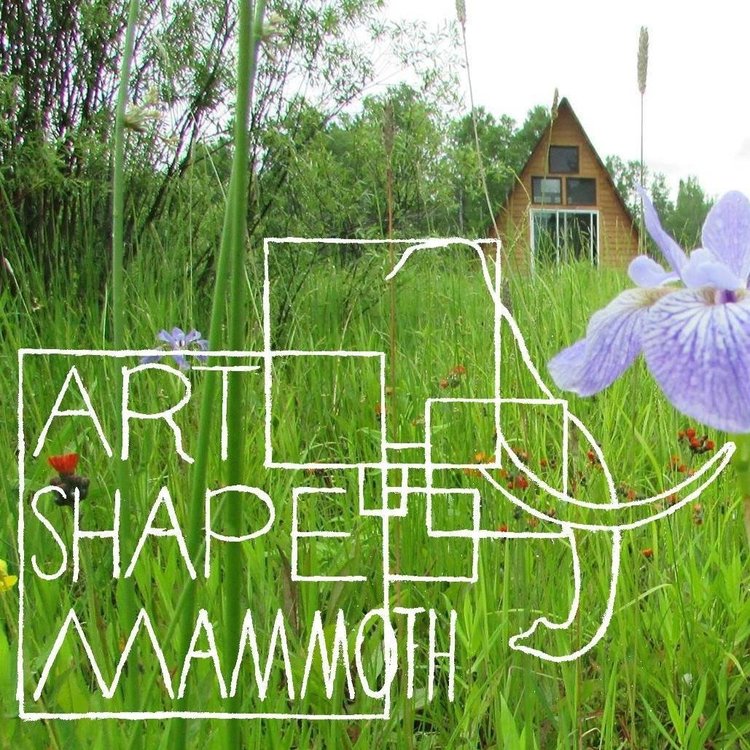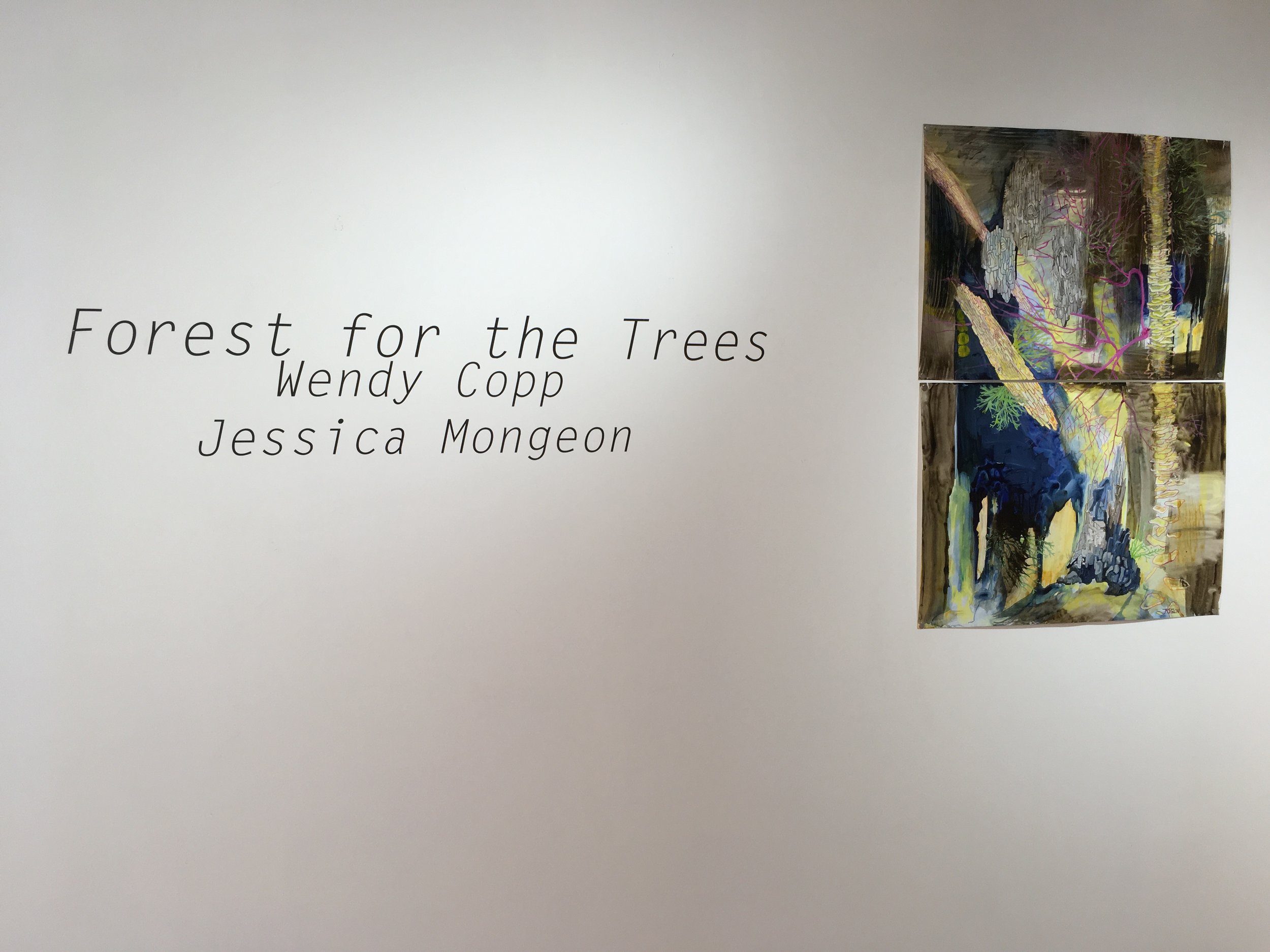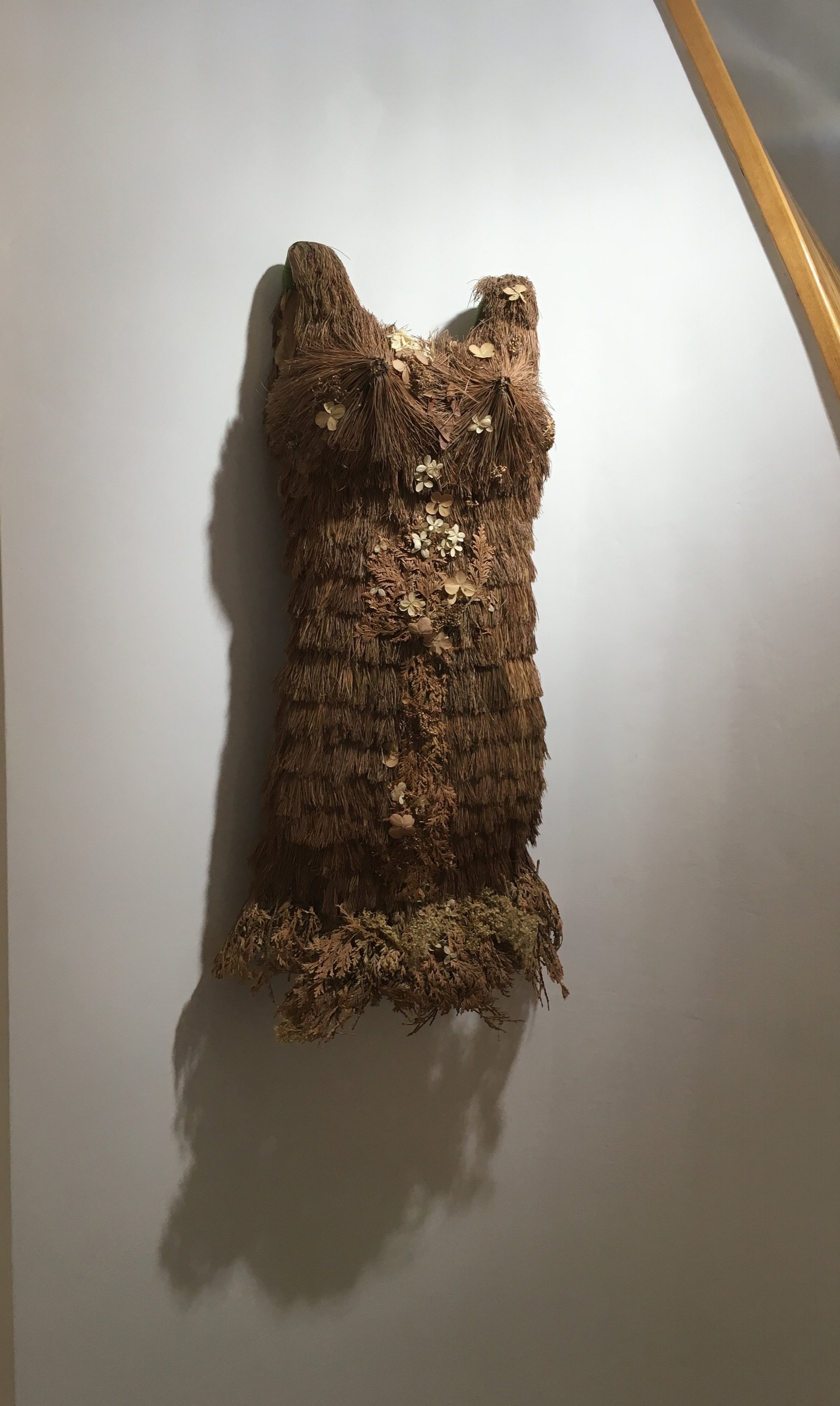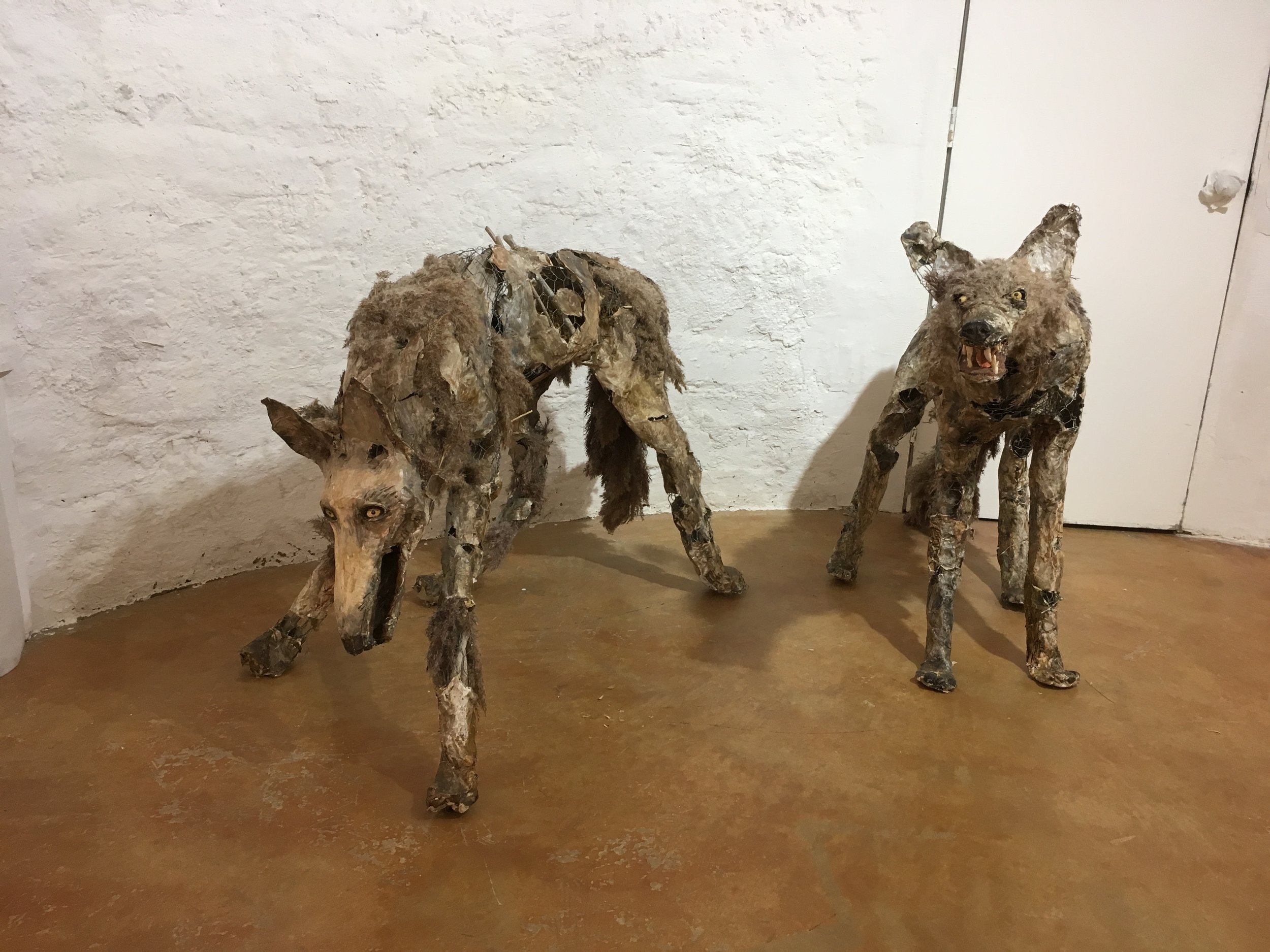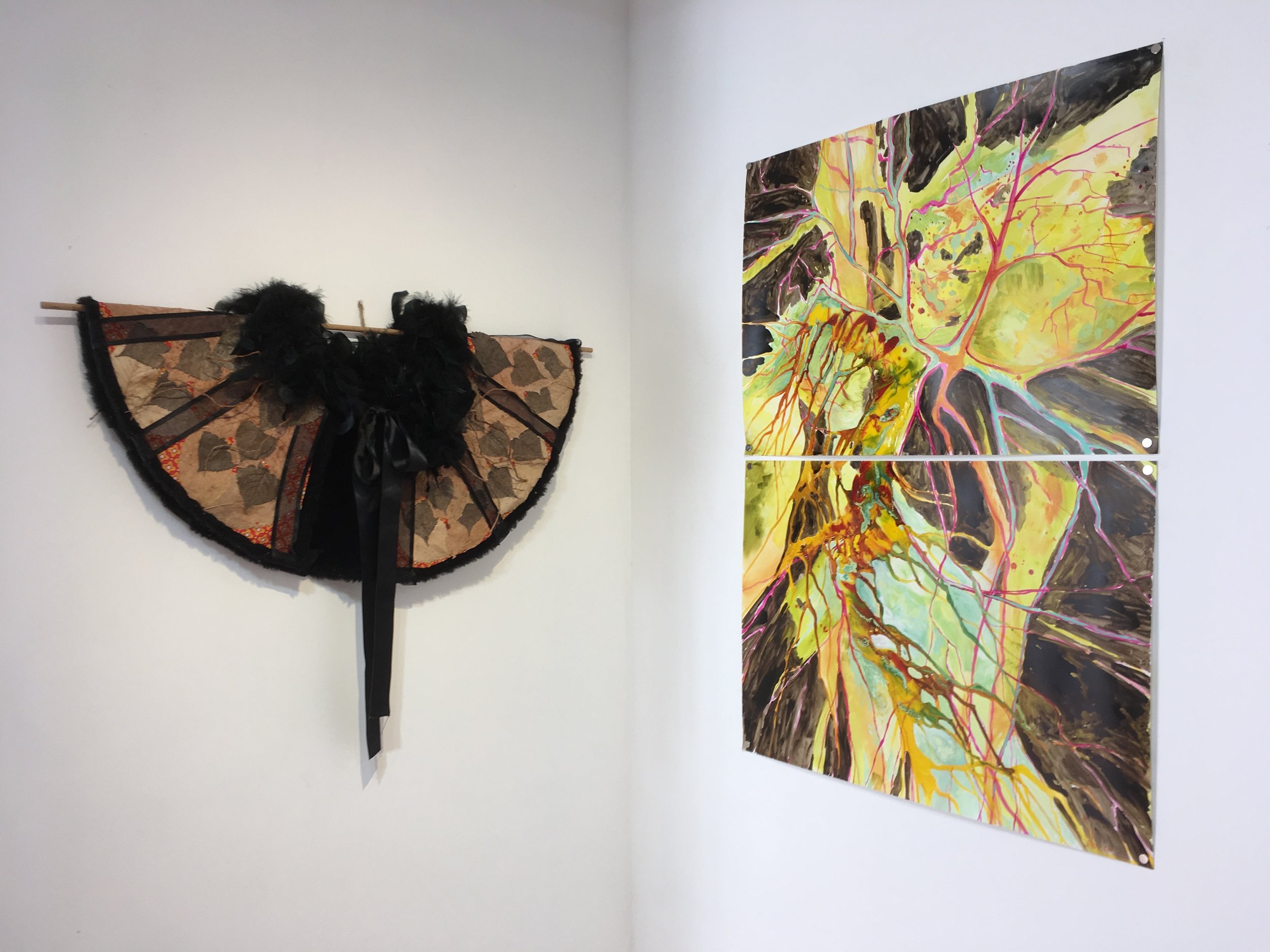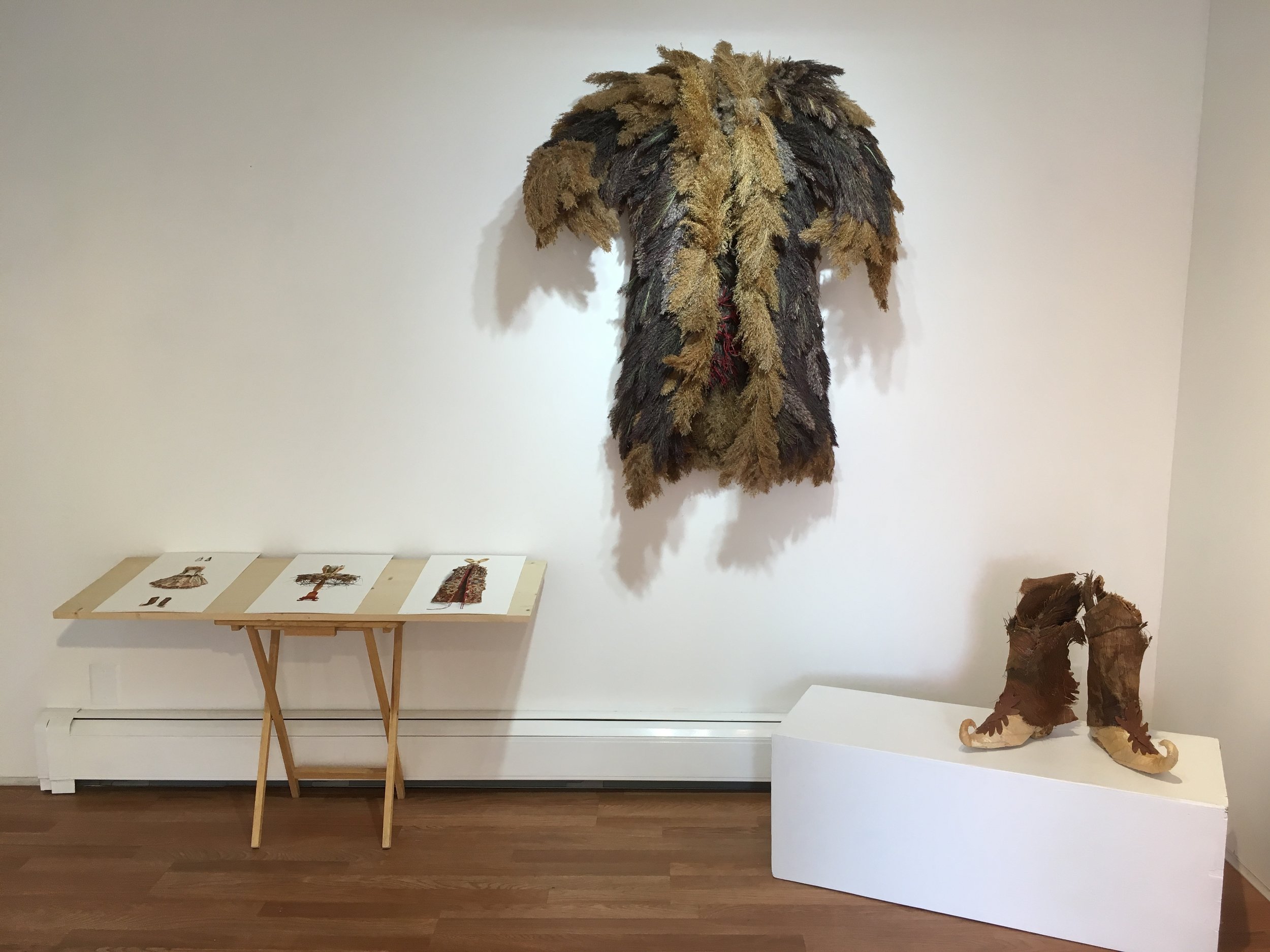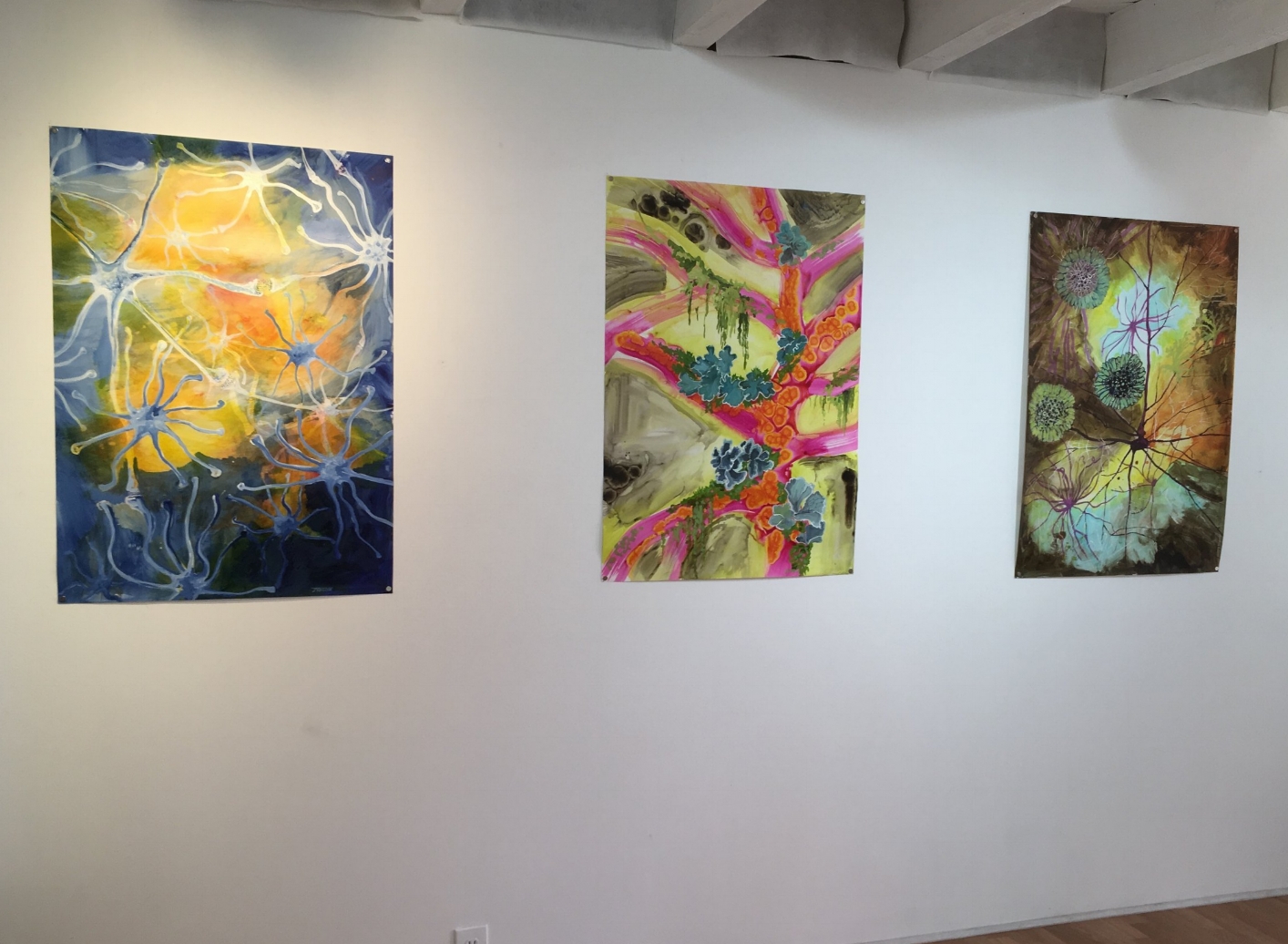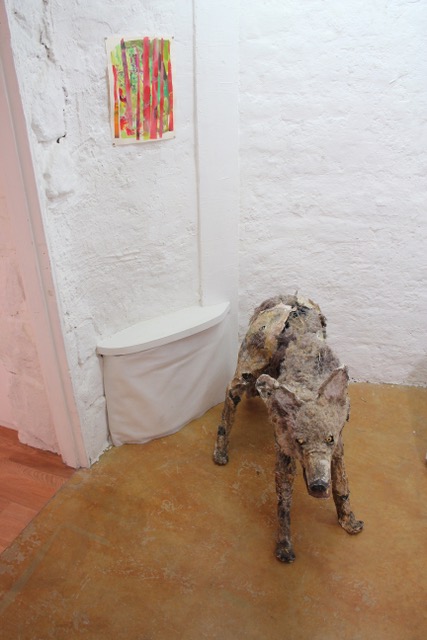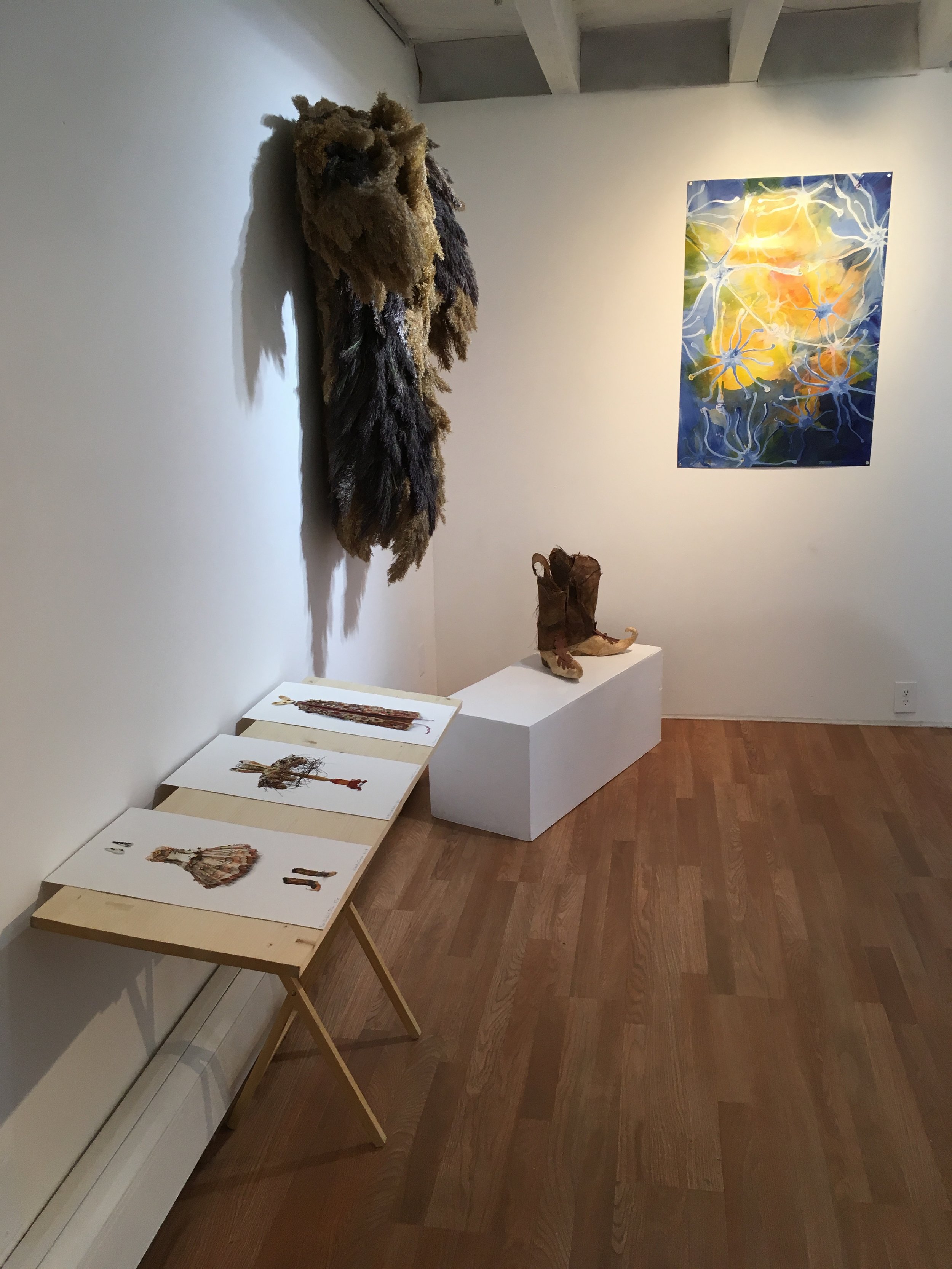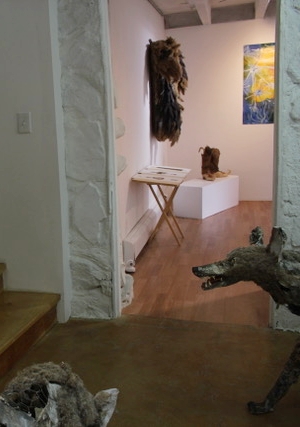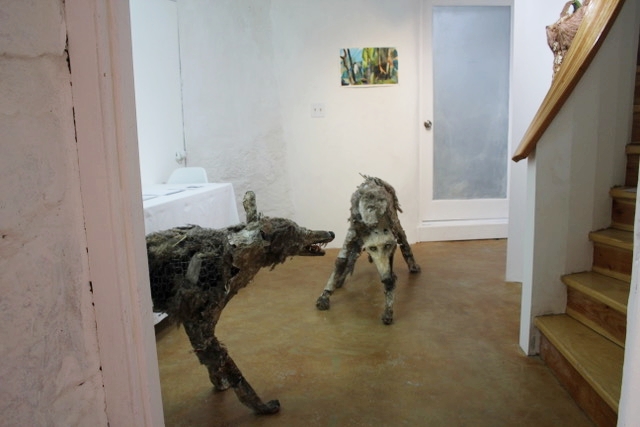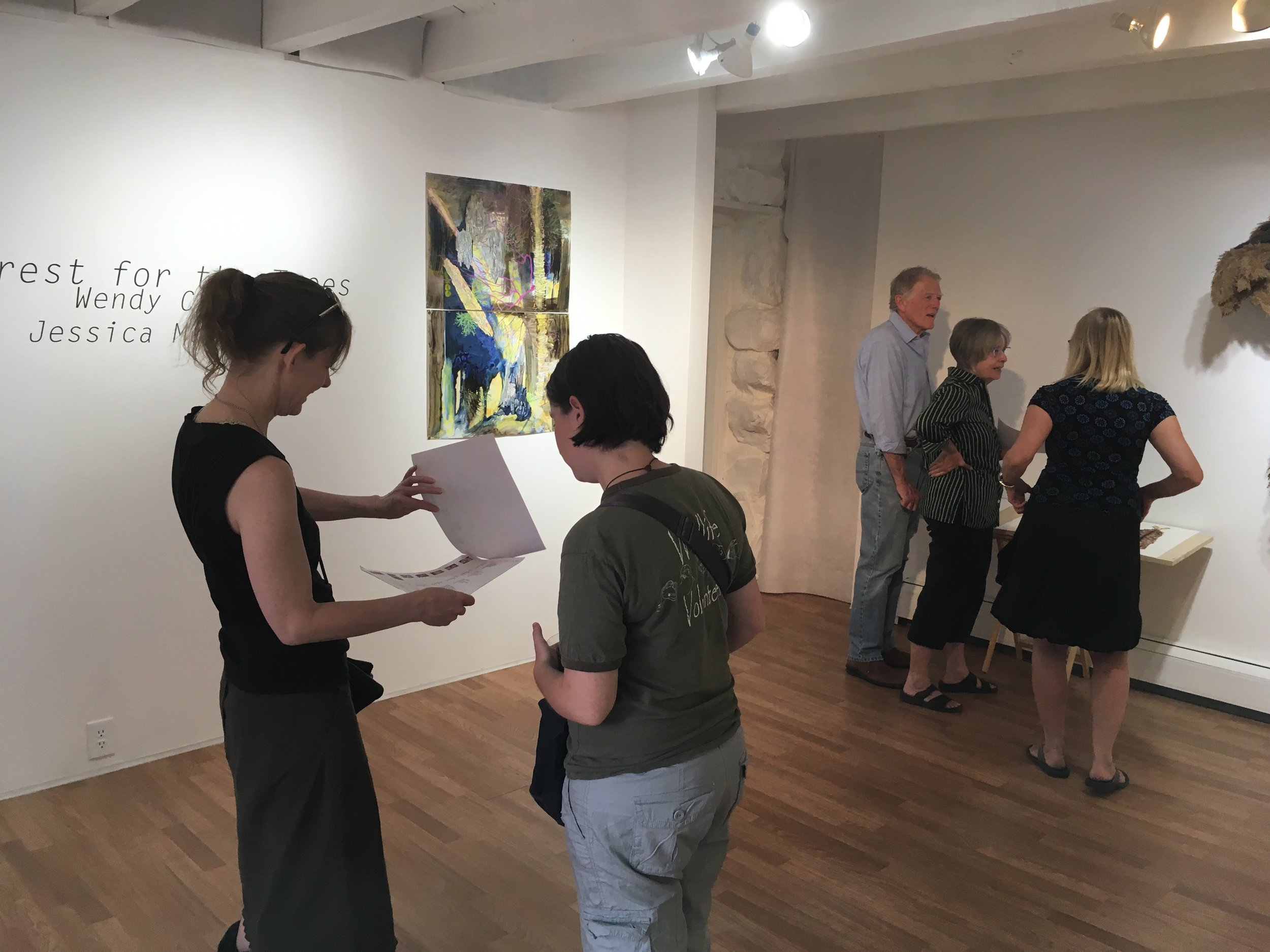Forest for the Trees
freeform art space, Santa Fe, NM
1619 C de Baca Ln, Santa Fe, NM, 87505, June 9th-24th, 2018
Opening Reception Saturday, June 9th, 5pm-8pm
Closing Event Saturday, June 23rd, 3pm-5pm with Artist Q & A at 3:15
Curated by Jane Gordon
L: Wendy Copp, Madame Butterfly (wearable), 2013. maple and cottonwood leaves, curly willow, fake fur, feathers and ribbon.
R: Jessica Mongeon, Dendritic Tree (diptych), 2016. acrylic on stone paper, 40"x28"
In these times of ever more complex systems, technologies, and issues, it can be tempting to simplify down to a dichotomy: big picture vs. small picture, detail vs whole; actually, we must do more to see both the Forest and the Trees, and acknowledge the emergent properties of systems that can only be seen if one seeks an understanding of the macro, the micro, and their interactions.
Wendy Copp and Jessica Mongeon explore the natural world, humanity’s place within it and role as steward. They study, observe, and gather materials from the environment around them, and create works that shift scales, building relationships between the cycles of the seasons, of life and death, of the minute and the mighty.
In Forest for the Trees, their works are brought together as a conversation between two dimensions and three dimensions, impressions and intuitions based on perceptions of external and internal worlds, and utilizing gathered materials in their raw state to create new versions or visions of their properties and uses.
I encourage you to take a step back, and lean in close.
About the artists:
Wendy Copp creates elegant, humorous, and sometimes provocative figures, garb, and structures made of natural materials that she gathers from the land. Influenced by opera, literature, mythology and science, she is interested in the hidden stories behind the absent protagonist, the contemplation of mortality and transformation, as well as our uneven relationship with nature in the modern age.
The materials used are from the trees and fields. The leaves, barks, and grasses gathered by the artist present a riot of texture, both visual and tactile. Lobular, smooth, bushy, pitted, feathery—every shape and structure reveals the complex and beautiful functioning of an organism, shaped by time and geography. When massed together, or applied in patterns, they form surfaces that are dimensional, sensual, and dense. To Wendy, they become “textiles” or “fur” that bring pieces of the landscape inside, thereby shifting their usual place in our vision. Wendy’s current work would not exist without this inherent textural being. It is one of the reasons she chooses the medium.
Jessica Mongeon explores geographic formations, organisms, and natural phenomena through the medium of acrylic paint. The environment is depicted with macro or micro points of view, ranging from landscape vistas to microscopic details. She observes parallels between seemingly unrelated networks and systems, such as lichen and human neurons. This series starts with observation of reality, through photography and scientific illustration, and becomes abstracted as it is translated through intuitive painting.
Many of her paintings are acrylic on eco-friendly tree-free paper that is made of calcium carbonate and resin. Large brushstrokes contrast with blooms of pigment and layered linear elements. Disorder and the inevitable breaking down of systems are part of the cyclical properties of nature that lead to growth; likewise, Jessica’s painting process is a form of controlled chaos. The paintings transcend temporality and scale; depicting human neurons on the same scale as lichen or roots. Lichen operate on a much longer geological time scale compared to humans, with some species of lichen living over 1,000 years. Neurons must connect and communicate to keep the mind and body alive. Similarly, lichen is made of a fungus, an alga and often a yeast that work in symbiosis. By acknowledging our embodiment of nature, perhaps we can care for the ecosystems that sustain us as much as we care for our own bodies.
